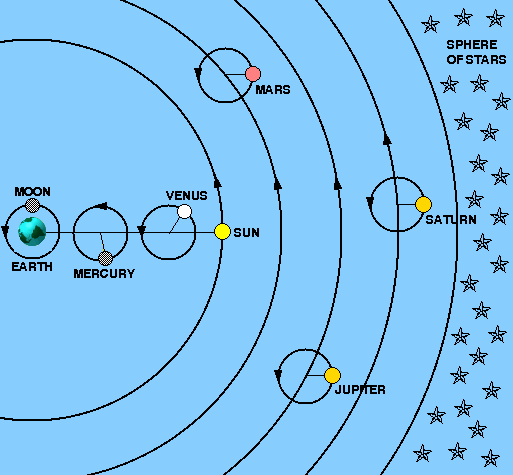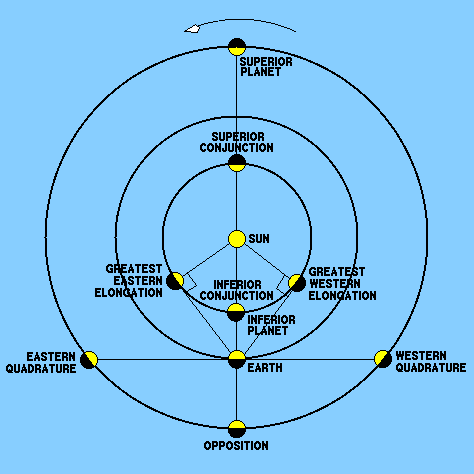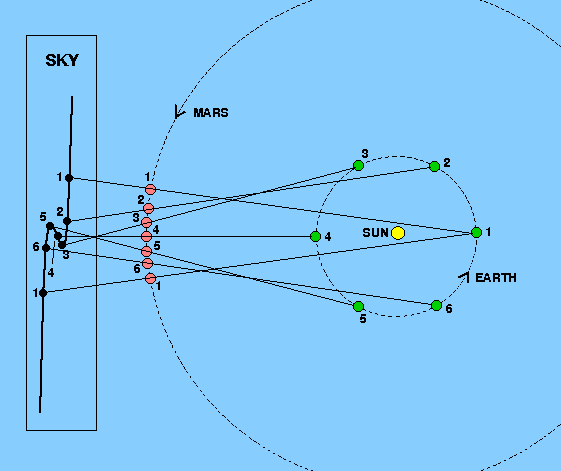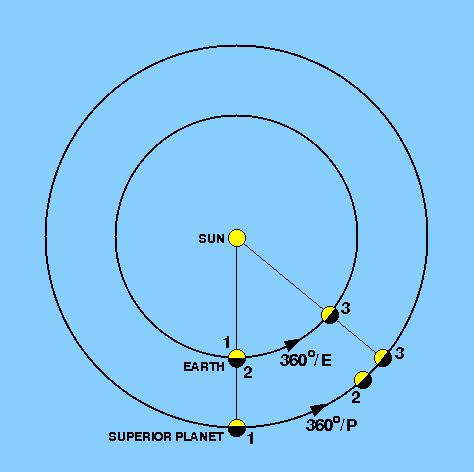| ptolemy, copernicus and galileo |
|
| figure 26: |
The Ptolemaic Universe. |

| figure 27: |
Planetary configurations in the Copernican model. The view is looking down
from the north pole of the ecliptic. |

| figure 28: |
Retrograde motion in the Copernican model. |

| figure 29: |
Successive similar configurations of two planets. |
